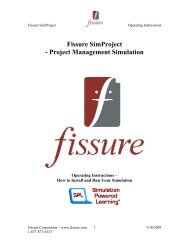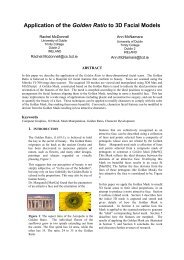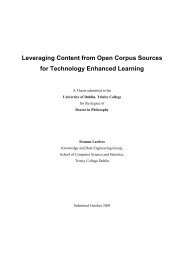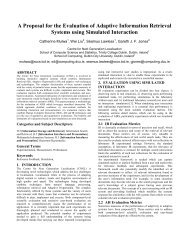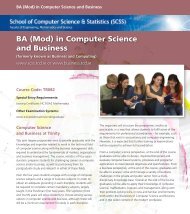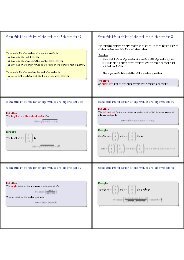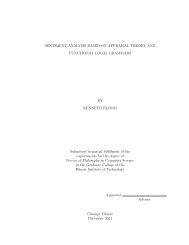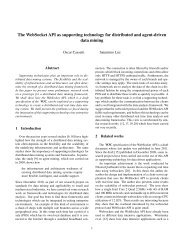Situations from events to proofs 1 Introduction
Situations from events to proofs 1 Introduction
Situations from events to proofs 1 Introduction
Create successful ePaper yourself
Turn your PDF publications into a flip-book with our unique Google optimized e-Paper software.
intensions of sentences are, as we have agreed, propositions. To clarify matters,<br />
notice that (CM) implies (UR), assuming possible worlds in (CM) are relabeled<br />
“circumstances of evaluation.”<br />
(UR)<br />
The reference of a sentence is uniquely determined by the proposition<br />
the sentence expresses and the circumstances of evaluation.<br />
Reducing circumstances of evaluation <strong>from</strong> possible worlds (in (CM)) <strong>to</strong> partial<br />
situations raises the question: could there not be propositions and circumstances<br />
of evaluation that <strong>to</strong>gether underdetermine reference, contradicting<br />
(UR)? We may, of course, hardwire existence and uniqueness of reference by<br />
throwing out circumstances of evaluation that lead <strong>to</strong> non-deterministic reference.<br />
But might such circumstances not be interesting in their own right? A<br />
plausible approach <strong>to</strong> ambiguity and presupposition failure is <strong>to</strong> explore the<br />
non-determinism possible in relations, as opposed <strong>to</strong> functions (<strong>from</strong> say, (CM)<br />
or, for that matter, Kaplan). That said, if we put ambiguity and presupposition<br />
failure aside, can we speak of “the described situation”?<br />
No, or so Davidson argues in page 91 of [Dav67], where he considers sentence<br />
(S1).<br />
(S1) Amundsen flew <strong>to</strong> the North Pole in May 1926.<br />
Davidson cautions against thinking (S1) describes an event 2 because of potential<br />
complications with uniqueness; the sentence may describe several flights or “a<br />
kind of event.” In any case, the crucial point for Davidson is that the sentence is<br />
true iff “there is an event that makes it true” ([Dav67], page 91). Here Davidson<br />
calls <strong>events</strong> <strong>proofs</strong> (inasmuch as what makes a sentence true is a proof). More<br />
generally, he associates certain action sentences S with sets E(S) of <strong>events</strong> such<br />
that<br />
S is true iff there is an event e such that e ∈ E(S) . (1)<br />
Possible worlds do not appear in (1), the idea being that (1) is purely extensional,<br />
with <strong>events</strong> as particulars. Observe, however, that (1) may hold for quite<br />
unrelated pairs S and E(S). For instance, given any event ê, we can satisfy (1)<br />
by setting<br />
E(S)<br />
def<br />
=<br />
{ {ê} if S is true<br />
∅ otherwise<br />
independently of whether or not S is remotely about ê. If the “actual” world<br />
were an event, we could, of course, choose that for ê, and claim that S is in<br />
some sense about ê. Even then, however, the question remains: why speak of<br />
<strong>events</strong> if one, ê, will do?<br />
In fact, we need more than one. An event may appear in many expressions<br />
as arguments <strong>to</strong> various predicates <strong>from</strong> which E(S) is, in practice, formed.<br />
Logical form is central <strong>to</strong> [Dav67]; it is unfortunate that (1) hides the logical<br />
form behind E(S) and the possibility that e occurs many places within that<br />
2 Throughout this paper, we follow Cooper in understanding <strong>events</strong> as situations.<br />
3



